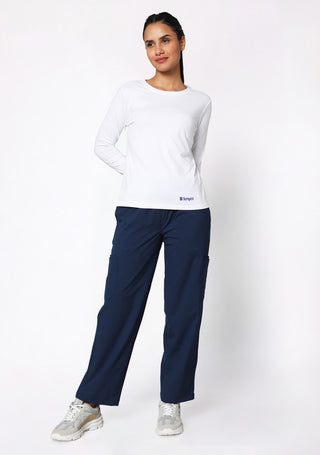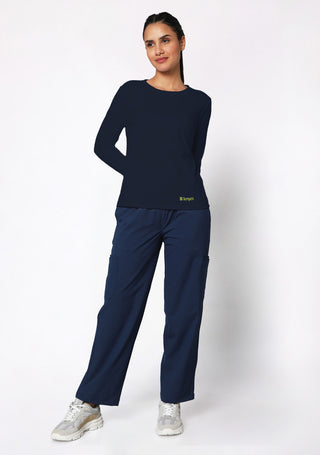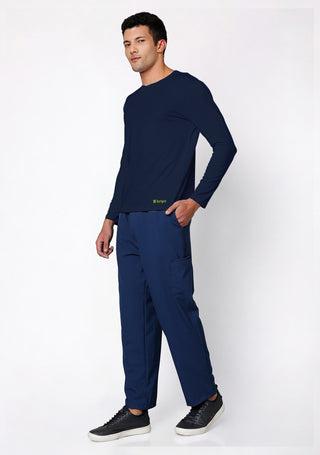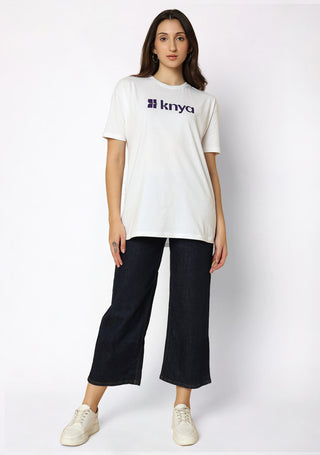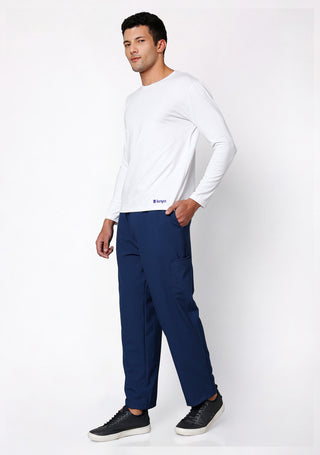Scrubs are an essential part of medical student life, but when and where they are worn depends on the phase of training and institutional policies. During the preclinical years, scrubs are mainly worn in anatomy labs, while in clinical rotations, they become a daily necessity, especially in surgical and emergency settings. When choosing scrubs, students should prioritize comfort, functionality, durability, and adherence to hospital regulations.
When Do Medical Students Start Wearing Scrubs?
Medical students typically begin wearing scrubs at different points in their education, depending on their school’s curriculum and policies. Here’s a general timeline of when scrubs become part of a medical student's wardrobe:
Preclinical Years (First and Second Year)
In the first two years of medical school, students primarily focus on classroom learning, basic sciences, and anatomy labs. During this time:
- Scrubs are often worn in anatomy labs: Because of dissections and exposure to chemicals like formaldehyde, many medical schools require students to wear scrubs or lab coats in these settings.
- Scrubs may not be required daily: Most first- and second-year students wear professional attire (business casual) to lectures and small group sessions instead of scrubs.
Ready to explore our amazing scrubs collection? Browse the best here.
Clinical Rotations (Third and Fourth Year)
Once students transition to clinical training in the hospital, scrubs become a regular part of their wardrobe:
- Hospital rotations: During clerkships in surgery, emergency medicine, obstetrics and gynecology, and certain other specialties, scrubs are mandatory.
- Operating rooms and procedural settings: Scrubs are required in these areas for hygiene and infection control.
- Hospital wards and clinics: Some hospitals allow students to wear scrubs during rounds, but others may require professional dress with a white coat.
- Night shifts and on-call duties: During long shifts or overnight calls, students often wear scrubs for comfort and practicality.
Electives and Special Rotations
Medical students in their final year may choose elective rotations in different specialties, some of which may require specific scrubs. For example:
- Emergency medicine and ICU rotations: Scrubs are often worn due to the nature of patient care.
- International or rural rotations: Some students wear scrubs more frequently in these settings, depending on available resources and hospital policies.
What to Look for When Choosing Scrubs for Medical Students
Not all scrubs are created equal. When selecting scrubs for medical school, consider the following factors:
Comfort and Fit
Since medical students spend long hours in the hospital, comfort is key. Look for scrubs that:
- Are made from breathable, flexible fabric.
- Offer a comfortable fit that allows easy movement.
- Are not too tight or too loose—ill-fitting scrubs can be uncomfortable and unprofessional.
Material and Durability
Scrubs should be made from high-quality materials that can withstand frequent washing. The best scrubs are:
- Wrinkle-resistant and require minimal ironing.
- Fade-resistant, especially for dark-colored scrubs.
- Moisture-wicking to keep you cool during long shifts.
We believe you deserve the best. Shop our amazing selection of lab coats right here.
Pockets and Functionality
Medical students carry a lot of essentials—pens, notepads, reflex hammers, and even pocket-sized medical textbooks. Choose scrubs with:
- Multiple pockets for easy storage.
- Chest pockets for ID badges or pens.
- Cargo pockets for extra space.
Color and Institutional Policies
Many hospitals have strict guidelines on scrub colors. Check with your institution to see if there are specific requirements. Common scrub colors and their meanings include:
- Navy blue: Often worn by doctors and medical students.
- Light blue: Common in surgical departments.
- Green: Frequently used in operating rooms.
- Black or gray: Used in emergency medicine or general hospital settings.
- Burgundy or wine: Sometimes worn by anesthesiologists or nurses.
Easy Maintenance
Medical students don’t have much time for laundry, so opt for scrubs that:
- Are machine washable.
- Dry quickly.
- Are stain-resistant to withstand exposure to bodily fluids and chemicals.
Budget and Affordability
Since scrubs are worn frequently, you may need multiple pairs. Consider:
- Buying scrubs in sets to save money.
- Looking for student discounts from medical apparel brands.
- Checking hospital-provided options—some institutions provide scrubs for free or at a discounted rate.
Additional Considerations for Medical Students Wearing Scrubs
Scrub Etiquette
Wearing scrubs comes with certain responsibilities:
- Only wear scrubs in the hospital: Many institutions discourage wearing scrubs outside to prevent the spread of infections.
- Change scrubs when necessary: If scrubs become soiled, students should change into a fresh pair immediately.
- Maintain a professional appearance: Even in scrubs, students should ensure they look neat and presentable.
Lab Coats Over Scrubs
In some settings, students wear lab coats over their scrubs. Lab coats:
- Provide additional pockets.
- Help distinguish medical students from other staff.
- Are often required in non-surgical settings.
Shoes and Accessories
Along with scrubs, students should invest in:
- Comfortable, closed-toe shoes that provide support for long hours on their feet.
- Compression socks to improve circulation.
- Minimal jewelry for hygiene and safety.
Hospital-Provided Scrubs vs. Personal Scrubs
Some hospitals provide scrubs, especially in sterile areas like the operating room. If hospital scrubs are required:
- Students must change into and out of them on-site.
- Hospital scrubs are usually laundered by the facility.
- Personal scrubs may still be needed for non-sterile rotations.
Cultural and Religious Considerations
Medical schools and hospitals accommodate students who follow religious dress codes. Options include:
- Long-sleeve undershirts for modesty.
- Head coverings or hijabs made from medical-grade fabric.
- Adjustable scrub tops for a more customized fit.




